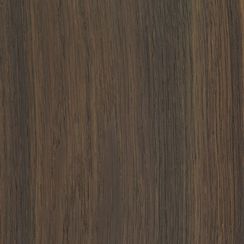Make an appointment at our concept.room for your individual project consulting
Veneer Black Locust smoked
BackSince ammonia may still be bound in the cell walls of the smoked wood in isolated cases, it is recommended to allow the veneer sheets to air well (approx. 3 - 4 hours) after cutting them to width and before joining them together. This allows clean joint gluing without any problems.
Detailed Description
A fast-growing tree that reaches heights of up to about 30 m and diameters of over 100 cm, although in Europe it is smaller. It has a very strong deflection capacity, is rarely straight-growing and usually not round. The bark is thin and early on forms a deep, net-like, tearing bark of grey-brown colouring.
Tradenames and other names
Bot. Name: Robinia pseudoacacia
Tradename De: Robinie geräuchert, Falsche Akazie geräuchert
Tradename En: Smoke Robinia, Smoked Black Locust
Properties
Raw density: 690 - 740 Kg/m3
Occurrence
The home of the Robinia is the southeastern part of the USA. In the meantime, however, this tree has been cultivated and naturalized in almost all parts of the world. Today the Robinia belongs to an important species of wood. Especially in Southern Europe the Robinia is found in large stands. - In Germany the Robinia is usually erroneously called "Acacia".
Characteristic and wood color
Sapwood and heartwood are not sharply separated. The sapwood is very narrow and yellowish, while the heartwood is greenish-yellow and matt shiny when freshly cut, soon darkening to a golden brown tone, very decorative due to sharply defined annual rings and a distinct grain and stripes.












